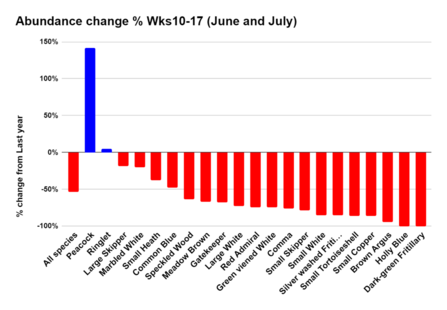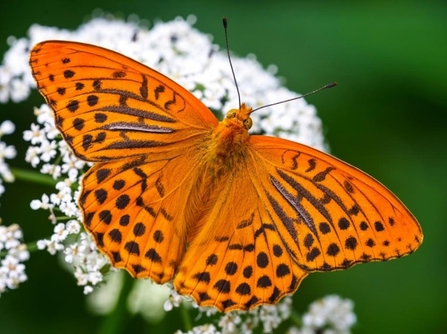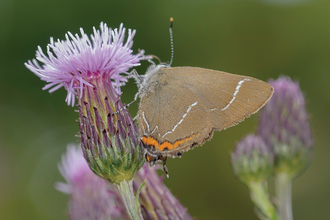Butterflies beguile us with their beauty and grace, bringing us so much pleasure in summer that almost everyone has noticed their absence this year. I expect your buddleia bush, like mine, has been empty, but it's not just butterflies; moths, bees and many other invertebrates have also been badly affected by the unseasonal weather. Perhaps understandably, we all want to know whether this is part of a long-term decline - and is it due to climate change?
Only a tiny percentage of butterfly eggs ever become adults. Butterfly caterpillars fall prey in huge numbers to birds, with a blue tit consuming 26,000 a year. Others succumb to disease, especially in the wet and cool weather we have had this year. It is a very fine balance, causing butterfly populations to go up and down by sometimes a factor of ten or more year to year.
To separate out weather factors and natural cycles from long term decline we need to study butterflies across many years; and we are lucky in the UK to have the most extensive abundance data of any group of species in the world, and thus a goldmine in the study of climate change. It takes an extraordinary effort from across the nation - you may even have contributed yourself through the Big Butterfly Count (BBC), the results of which show butterfly numbers are well down this year.
A good example of a butterfly easily spotted in your garden which has seen a great deal of fluctuation is the colourful small tortoiseshell, which has been through a boom and is now bust. The warm and wet weather in June 2020 and 2021 meant their nettle food plant grew lushly, and the tortoiseshell boomed - during the drought and extreme heat of 2022, nettles became unpalatable, killing their caterpillars. The extreme heat drove surviving adults to hibernate immediately, and not breed again that year as they normally would. This then repeated during the record hot June of 2023, making 2024 a triple whammy - and now you are very lucky to have seen a tortoiseshell in lowland Yorkshire!
Butterfly Conservation (BC) is proud to work alongside Yorkshire Wildlife Trust (YWT) in monitoring butterfly trends through a network of transect sites, including many YWT reserves. Each week over a hundred YWT and BC volunteers walk around sites when conditions are sunny and warm enough for flight - which has proven extraordinarily difficult in recent months, and is testament to their commitment.




